This article was co-authored by wikiHow Staff. Our trained team of editors and researchers validate articles for accuracy and comprehensiveness. wikiHow's Content Management Team carefully monitors the work from our editorial staff to ensure that each article is backed by trusted research and meets our high quality standards.
There are 11 references cited in this article, which can be found at the bottom of the page.
wikiHow marks an article as reader-approved once it receives enough positive feedback. In this case, 83% of readers who voted found the article helpful, earning it our reader-approved status.
This article has been viewed 3,623,353 times.
Learn more...
Whether it hits when you’re trying to brush your back molars or when the dentist is checking for cavities, the gag reflex can turn dental hygiene into an unpleasant situation. Cyberspace shares many different ideas on how to suppress this reflex, but there are several that stand out above the rest. Use immediate remedies such as numbing your palate or stimulating your taste buds to bring the gagging to a halt. Over time, you can also use your toothbrush to desensitize your gag reflex or practice refocusing techniques to help it subside quickly.
Steps
Using Immediate Remedies
-
1Squeeze your thumb. Close your left thumb in your left hand and make a fist. Position your thumb under your fingers. Squeeze tightly without causing yourself too much pain. [1]
Note: This trick puts pressure on a point in your palm that controls the gag reflex.
-
2Put a little table salt on your tongue. Moisten the tip of your finger, dip it into some salt, and touch the salt to your tongue. Salt activates the taste buds on the front of your tongue and sets off a chain reaction that temporarily suppresses your gag reflex.[2]
- Another way to do this is to put a teaspoon (0.99 metric tsp) of salt in a glass of water and rinse your mouth with that. Don't forget to spit!
Advertisement -
3Numb your soft palate. When an object touches the soft palate, it can trigger the gag reflex. Use an over-the-counter (OTC) throat-numbing spray like Chloraseptic to desensitize your soft palate. Alternatively, you could gently apply a topical OTC analgesic with benzocaine using a cotton swab. The effects should last for about an hour, and your palate will be less reactive.[3]
- Throat-numbing sprays rarely cause side effects. However, you should stop using it if you experience vomiting, nausea, dizziness, drowsiness, and/or stomach cramps.[4]
- Use the benzocaine remedy with caution. The cotton swab could trigger a gag or choking reflex. Other possible side effects include fatigue, weakness, skin irritation around the ears, blue skin around the lips and fingertips, and shortness of breath.[5]
- You should avoid the benzocaine remedy entirely if you’re allergic to benzocaine. Ask your doctor or pharmacist about interactions with other OTC medications, vitamins/supplements, or herbal remedies you might be taking.
Desensitizing the Gag Reflex
-
1Find out where your gag reflex starts. You can do this by using your toothbrush to brush your tongue. The point nearest to the front of your tongue that makes you gag is where you should concentrate.[6]
- Don’t stick your fingers in your mouth. You might induce vomiting.
Note: You might be more likely to gag earlier in the day. Try to schedule the gag-inducing activity for the late afternoon or evening instead.
-
2Brush your tongue right where your gag begins. Yes, you'll gag, and it will be unpleasant, but it won’t last long. Spend about ten seconds brushing that area (and gagging). Then call it a night.[7]
- Repeat the process over the next few nights in the exact same spot. Your gag should gradually decrease each time you do it.
-
3Increase the brushing area. Once you can touch your toothbrush to the original starting point without gagging, it's time to move the toothbrush farther back. Try brushing ¼ to ½ inch (6mm–12mm) behind where your gag used to begin. Repeat the process as you did in the first spot.
-
4Move the brush farther back. Do this each time you make progress desensitizing small areas in front. Keep moving it farther back until you've reached the farthest visible point of your tongue. Eventually, the toothbrush will come into contact with your soft palate, if it hasn't already.
-
5Desensitize everyday. Be persistent. This process takes about a month to complete. Afterward, you should be able to have a doctor swab the back of your throat without gagging. You might have to repeat the process from time to time, as your reflex might return if you don't.[8]
- A good way to keep yourself desensitized is to brush your tongue regularly. Not only will it help quell the gag reflex, it’ll also give you fresher breath!
Redirecting Your Focus
-
1Practice some form of meditation. Ask your dentist if you can wear earplugs to drown out the sound of equipment they’ll be using during your appointment. This will allow you to focus on calming thoughts and forget about the activity going on near your throat. If you think you might fall asleep, ask for a bite block to prop your jaw open.[9]
-
2
-
3Raise one leg slightly. Do this while you’re sitting or lying in the dentist’s chair. Concentrate on keeping your leg raised. Switch legs if your first leg gets tired. This trick will distract you from the work going on in your mouth and near your soft palate.[11]
Word of warning: This trick won’t work so well if you rest one leg on top of the other.
-
4Listen to music. Ask your dentist if you can play your MP3 player during your cleaning or filling. Play songs that make your mind wander or interesting podcasts that demand your full attention. Either way, you’ll be too busy focusing on audio to notice what the dentist is doing.[12]
Warnings
- When disengaging the gag reflex with a toothbrush, don't start too far back. It’s possible to desensitize a rear point on your tongue without first treating a spot toward the front. This isn't what you're trying to achieve.⧼thumbs_response⧽
- Remember that the gag reflex is your body's way of protecting you from choking. Avoid trying to permanently desensitize your soft palate.⧼thumbs_response⧽
- Excessive gagging could be a sign of a more serious condition, like Gastroesophageal Reflux Disease (GERD), which has to do with your stomach and the acid levels in it. See your doctor if you also experience acid reflux or a burning/sour stomach.⧼thumbs_response⧽
References
- ↑ http://jada.ada.org/article/S0002-8177(14)65414-3/pdf
- ↑ http://jada.ada.org/article/S0002-8177(14)65414-3/pdf
- ↑ https://www.ncbi.nlm.nih.gov/pmc/articles/PMC3243886/
- ↑ http://www.webmd.com/drugs/2/drug-167665/chloraseptic-total-oral/details/list-sideeffects
- ↑ http://www.mayoclinic.org/drugs-supplements/benzocaine-topical-application-route/side-effects/drg-20072913
- ↑ http://patch.com/illinois/downersgrove/ask-a-dentist-i-have-a-terrible-gag-reflex--is-there-anything-to-make-visits-easier
- ↑ http://patch.com/illinois/downersgrove/ask-a-dentist-i-have-a-terrible-gag-reflex--is-there-anything-to-make-visits-easier
- ↑ http://ic.steadyhealth.com/how-to-lose-gag-reflex
- ↑ http://www.dentaleconomics.com/articles/print/volume-103/issue-10/practice/control-patient-gagging.html
- ↑ http://www.rdhmag.com/articles/print/volume-29/issue-10/feature/donrsquot-give-up-on-gaggers.html
- ↑ http://www.rdhmag.com/articles/print/volume-29/issue-10/feature/donrsquot-give-up-on-gaggers.html
- ↑ http://www.dentaleconomics.com/articles/print/volume-103/issue-10/practice/control-patient-gagging.html
About This Article
If you need to suppress your gag reflex, try squeezing your left thumb by making a fist. By squeezing tightly, you’ll put pressure on a point in your palm that controls the gag reflex. Alternatively, put a pinch of salt on the tip of your tongue, which will activate your taste buds and set off a chain reaction that temporarily numbs your gag reflex. To desensitize your gag reflex long-term, find out the point where your gag reflex starts and use your toothbrush to brush your tongue at that point every night. Repeat this process every night, gradually moving farther back until you reach the farthest point on your tongue. For more help, like how to suppress your gag reflex by redirecting your focus, read on.

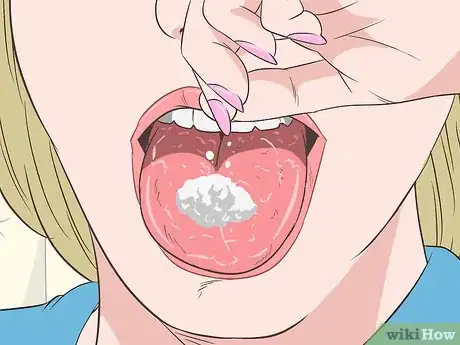
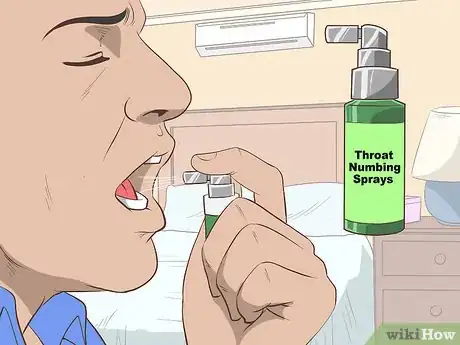
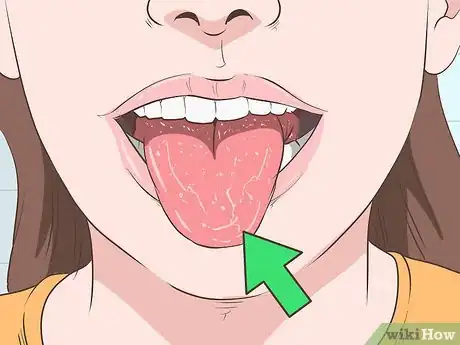
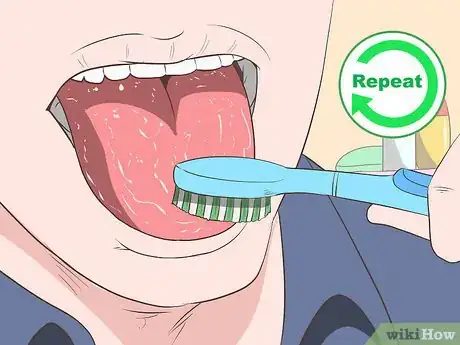


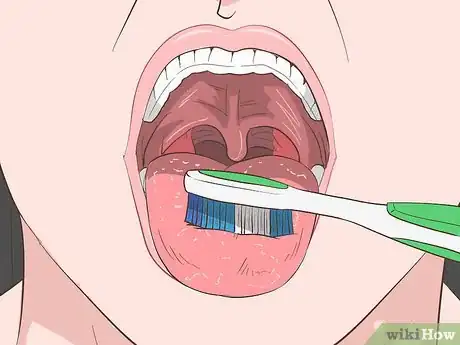




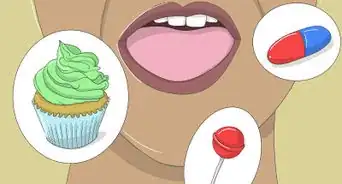


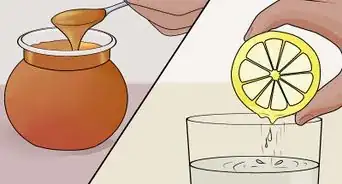

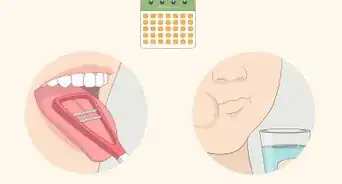

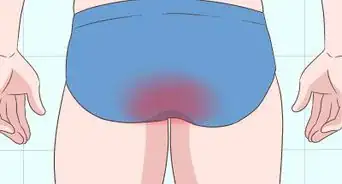
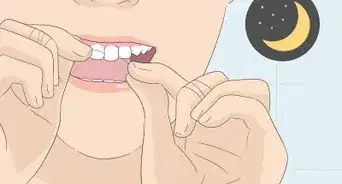
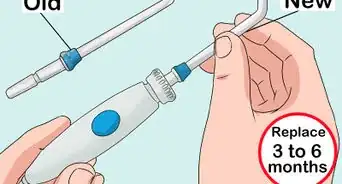

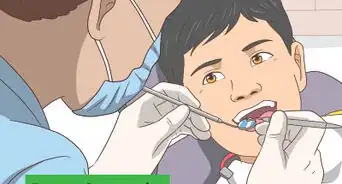
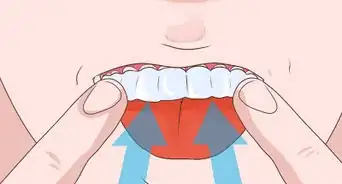


















































Medical Disclaimer
The content of this article is not intended to be a substitute for professional medical advice, examination, diagnosis, or treatment. You should always contact your doctor or other qualified healthcare professional before starting, changing, or stopping any kind of health treatment.
Read More...